From architects to civil engineers, from manufacturers to car designers, every professional today needs advanced CAD software. The modern market is full of many CAD tools, each tailored to address specific challenges and streamline the design process in its unique way. Undoubtedly, this diversity is a great advantage. However, it can also significantly complicate the process of finding and deciding on the program that best meets your needs and requirements. This is especially unacceptable when you are limited in time and don’t have the opportunity to try different packages to find the best one for you, or don’t want to overpay for a solution that will eventually disappoint you.
The Applet3D team has created this detailed review of the best CAD software in 2024 to help you avoid the tedious and time-consuming search for the perfect solution for your project. Our experts have shared their experience of using certain programs, named their main pros and cons, and provided some useful tips on how to choose the best computer-aided design software. Here you will also find several options with free trial access. The study was conducted in 2024.
Best CAD programs in 2024
After researching the market and user preferences, we have compiled the top 11 most used CAD software in the industry and compared them to each other. The table below summarizes key information about each software package, including pricing, availability of free plans or trials, usage levels, key features, and more. We also analyzed the ratings of these programs based on user reviews on platforms such as Capterra, G2, GetApp, and Software Advice, which you can also see in the table and descriptions below. For your convenience, Applet3D has determined the overall rating of each CAD program based on this data and arranged them in the table in descending order.
| Name | Price/Free plan | Best for | Available on | Last update/ version | Key features | Primary Use | Industry | Rating |
| Shapr 3D | $25/month. Free for students, teachers, and faculty members; Free 14-day trial; Free Basic plan | Professio nals and amateurs. Offer tutorials for begin ners | Windows, macOS, iPad, and visionOS | 2023 | Powerful solid modeling tools, direct modeling capabilities, and compatibility with other CAD software. | Сonceptual 3D modeling | Architect ure, product design | Overall: 4.8 Capterra: 4.7 GetApp: 4.7 G2: 4.9 |
| Siemens NX | Depends on the chosen solution for specific needs. Free 30-day trial; Free for students | Professio nals and amateurs | Windows, macOS, Linux | 2023 | High-end modeling, simulation, manufacturing solutions, and integrated product lifecycle management (PLM). | CAD/ CAM/ CAE | Engineer ing, product design, medical | Overall: 4.6 Capterra: 4.7 GetApp: 4.7 Software Advice: 4.7 G2: 4.4 |
| Auto CAD | $6,090/3 years; $2,030/1 year; $255/month. Free 15-day trial; Free 1-year Educational plan | Professio nals, amateurs, and begin ners | Windows, macOS | 2023 | Extensive 2D documentation, simple 3D modeling, and a vast array of customization options. | 2D and 3D drafting | Architect ure, construct ion | Overall: 4.6 Capterra: 4.6 GetApp: 4.6 Software Advice: 4.7 G2: 4.4 |
| SOLID WORKS | Need to get a quote from a reseller | Professio nals | Windows | 2023 | Solid modeling, sheet metal design, and simulation packages. | 3D CAD design and simulation | Engineering, product design, furniture, manufactur ing, medical | Overall: 4.6 Capterra: 4.6 GetApp: 4.6 Software Advice: 4.6 G2: 4.4 |
| Rhinoceros (Rhino3d) | From $95/ licence. Free 90-day trial license | Professio nals and amateurs | Windows, macOS | 2023 | NURBS modeling, vast plugin ecosystem, and interoperability with other design tools. | 3D modeling | Automotive, architecture, jewelry, makerspace/ 3D printing, landscaping | Overall: 4.6 Capterra: 4.6 GetApp: 4.6 Software Advice: 4.6 G2: 4.4 |
| Inventor | $7,500/3 years; $2,500/ year; $315/month. Free 30-day trial for students and educators | Professio nals | Windows | 2024 | Parametric modeling, assembly modeling, and automated design tools. | 3D mechanical design | Manufactur ing, medical | Overall: 4.5 Capterra: 4.6 GetApp: 4.6 Software Advice: 4.5 G2: 4.4 |
| CATIA | Depends on the chosen solution for specific needs | Professio nals and amateurs | Windows, Unix | 2023 | Advanced surface modeling, system-level engineering, and support for collaborative design. | CAD/ CAM/ CAE | Automotive | Overall: 4.5 Capterra: 4.6 GetApp: 4.6 Software Advice: 4.6 G2: 4.2 |
| Fusion 360 | $2,040/3 years; $680/1 year; $85/month. Free 30-day trial; Free for hobbyists, non-commercial use, and qualifying startups | Professio nals, amateurs, and beginners | Windows, macOS, Chrome book | 2022 | Parametric modeling, simulation, and generative design functionalities. | 3D CAD/ CAM/ CAE | Makerspace/ 3D printing | Overall: 4.5 Capterra: 4.5 GetApp: 4.5 Software Advice: 4.5 G2: 4.5 |
| Archi CAD | From $200+ tax/month. Free 30-day trial license; Free for educational use | Professio nals and amateurs | Windows, macOS | 2023 | BIM functionalities, photorealistic rendering, and a vast object library. | Architect ural design and document ation | Architecture, construction | Overall: 4.5 Capterra: 4.5 GetApp: 4.5 Software Advice: 4.5 |
| Creo | Need to request a personal consultation. Free 30-day trial | Professio nals and amateurs | Windows | 2023 | Parametric and direct modeling, simulation, and additive manufacturing capabilities. | 3D CAD, CAM, CAE | Automotive, engineering, product design, Virtual Reality | Overall: 4.3 Capterra: 4.4 GetApp: 4.4 Software Advice: 4.4 G2: 4.1 |
| Micro Station | From $2,135.00/12-month subscription license. Free 14-day trial | Professio nals | Windows | 2024 | Precision drafting and design, BIM functionalities, and interoperability with other applications. | 2D and 3D modeling, drafting | Infrastructure | Overall: 4.2 Capterra: 4.3 GetApp: 4.3 Software Advice: 4.3 G2: 4.0 |
Below, we offer a detailed description of the characteristics, advantages, and disadvantages of each CAD system. Since all the programs on the list can serve different purposes, we’ve divided this Top CAD software into the following categories:
- General-purpose and multi-industry CAD software;
- Mechanical design and engineering;
- Architectural and construction design;
- High-end and industry-specific CAD solutions;
- Product design and prototyping.
So what is the best CAD software? Let’s puzzle it out.
General-purpose and multi-industry CAD software
These applications are versatile and widely used across several industries for a broad range of design and drafting applications.
AutoCAD
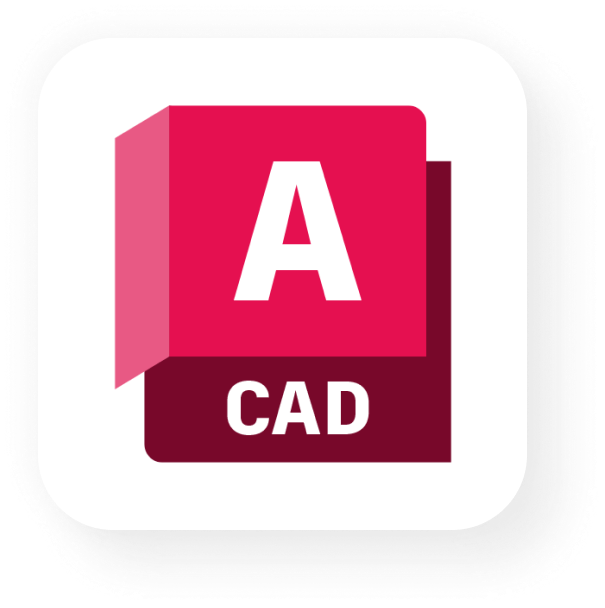
Price: $6,090 per 3 years; $2,030 per 1 year; $255 per month; Free 15-day trial; Free 1-year Educational plan
Best for: Professionals, amateurs, and beginners
Available on: Windows, macOS
Last version: 2023
Primary use: 2D and 3D drafting
Industry: Architecture, construction
AutoCAD is a basic CAD system developed and supplied by Autodesk. Autodesk AutoCAD is the most widely used CAD software in the world, allowing you to design in both 2D and 3D environments. With the AutoCAD design system, you can build 3D models, create and format drawings, and much more. As AutoCAD is a platform CAD, this system does not have a clear focus on a specific project area. This computer-aided design software can be used to carry out construction, machine-building projects, work with surveys, electrics, and much more.
With this 3D CAD program, you have everything you need to design your 3D drawing and 3D models. However, AutoCAD is not as intuitive as some products designed specifically for creating 3D drawings. This CAD 3D software can be used for almost any type of drawing. Besides, Autodesk develops some versions of AutoCAD (AutoCAD Mechanical, AutoCAD Electrical) intended for experts in the corresponding direction. AutoCAD programs also include ProSteel AutoCAD, AutoCAD LT, and Web. AutoCAD also offers many tutorials.
What pros and cons did we find after using the program?
Pros:
- Extensive customization and adaptation options;
- Creating applications tools in built-in languages and using APIs;
- The abundance of third-party programs;
- Sends feedback directly to a DWG file;
- Automates block counting;
- 3D navigation and rendering;
- 2D drafting, annotations, and drawings;
- External links and block palettes;
- 3D models can be easily converted into STL files for 3D printing.
Cons:
- High price;
- There is no function for reading drawings made by other graphic editors;
- Build history is not supported;
- There is no 3D parametrization;
- Installation technical requirements are quite high.
Fusion 360
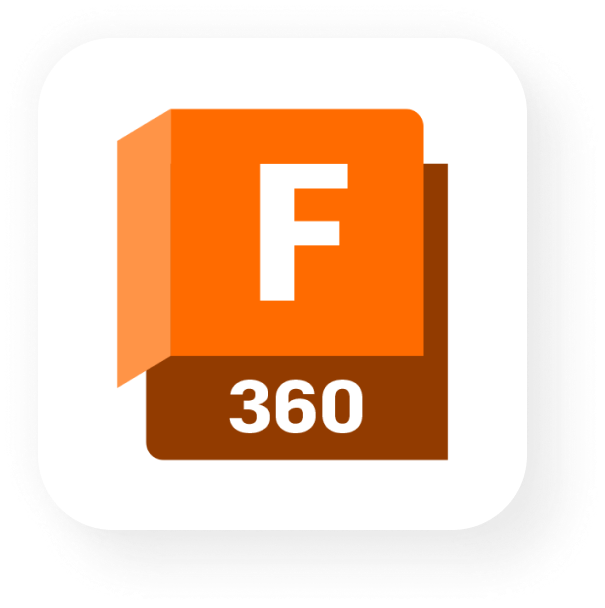
Price: $2,040 per 3 years; $680 per 1 year; $85 per month; Free 30-day trial; Free for hobbyists, non-commercial use, and qualifying startups
Best for: Professionals, amateurs, and beginners
Available on: Windows, macOS, Chromebook
Last version: 2022
Primary use: 3D CAD/CAM/CAE
Industry: Makerspace/3D printing
Fusion 360 is focused on solving a wide range of problems, from simple modeling to complex calculations. Fusion 360 is a cloud-based CAD platform that provides an affordable, high-performance alternative to other similar software products. Besides, it can be downloaded as a free commercial trial for 30 days, or as a personal use subscription with limited functionality. Fusion 360 is an easy-to-use computer application, which has all the features that popular 3D CAD packages contain. Fusion 360 can be used for design, rendering, animation, modeling, manufacturing, and drafting.
This common CAD software has a very large knowledge base that fully covers all the features of the tool. These tutorials can be accessed through both Fusion 360 and the Autodesk website. There is also an official Autodesk Fusion 360 YouTube channel with many free tutorials. This popular CAD software is updated frequently and new features appear every few months.
What pros and cons did we find after using the program?
Pros:
- Advanced user interface;
- Combination of different modeling methods;
- Advanced assembly tools;
- Ability to work online and offline;
- Affordable acquisition and maintenance costs;
- Calculations, optimization, visualization of models;
- Embedded CAM system;
- Possibilities of direct output of models for 3D printing.
Cons:
- Can be especially confusing for those not used to 3D modeling or CAD tools;
- The user interface can be a bit difficult at first;
- Lots of unlabeled buttons that take time to get used to.
MicroStation

Price: From $2,135.00 per 12-month subscription license; Free 14-day trial
Best for: Professionals
Available on: Windows
Last version: 2024
Primary use: 2D and 3D modeling, drafting
Industry: Infrastructure
Common CAD software that contains all the necessary basic design tools. Used by architects and engineers to visualize, model, create drawings, and document designs. MicroStation has a set of standard styles that are always visible; there is no need to set the scale for the line style, and a built-in system for editing and creating styles. This CAD system software offers extensive opportunities for collaboration on the project, multiple models support in one project, and the ability to connect an unlimited number of other project files.
MicroStation enables project team collaboration, including work on designs and models created using BIM applications. As a result, you can create complex universal BIM models and produce project documentation. Since the project team works in a universal modeling application, all participants will be able to easily communicate, share results, and maintain data integrity. This CAD application software is based on a single integrated modeling platform.
What pros and cons did we find after using the program?
Pros:
- Native support for DGN and DWG files;
- A robust 3D modeling toolkit;
- Ability to visualize and analyze data on models;
- Great drafting software for PC;
- BIM workflows.
Cons:
- Difficult to master;
- The user interface is not very intuitive and user-friendly;
- Pipe profiles are difficult to draw and do not update automatically.
Mechanical design and engineering
Software in this category is focused on mechanical engineering, product design, and manufacturing processes.
SOLIDWORKS
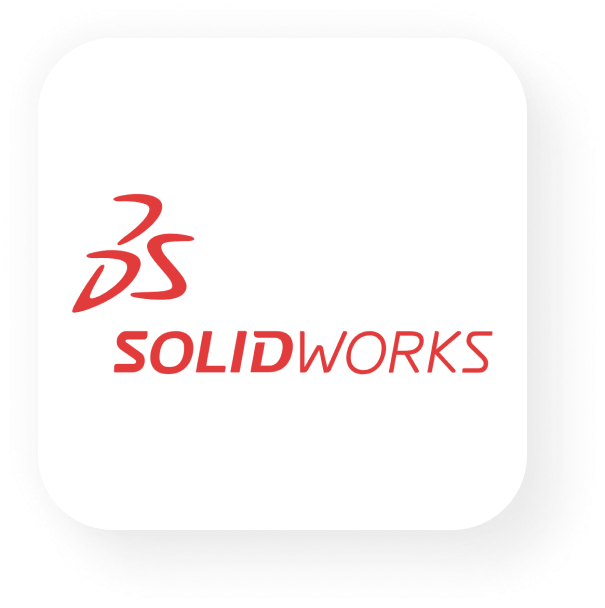
Price: Need to get a quote from a reseller
Best for: Professionals
Available on: Windows
Last version: 2023
Primary use: 3D CAD design and simulation
Industry: Engineering, product design, furniture, manufacturing, medical
The biggest CAD software after AutoCAD and the most popular CAD software for engineering. SOLIDWORKS is a great solution for automating the design work of an industrial enterprise. The developer is Dassault Systemes. SOLIDWORKS is effective in design, documentation, data management, and verification. CAD engineering software provides the development of products of any degree of complexity and purpose.
SOLIDWORKS allows you to model individual parts, assemble them, perform various calculations, prepare design documentation, and create photorealistic renderings of finished products. This engineering drawing software offers numerous tutorials for users of all levels.
What pros and cons did we find after using the program?
Pros:
- Convenient user interface;
- Many add-ons for special tasks;
- Orientation to both design and technological preparation of production;
- Libraries of standard elements;
- Integration with SOLIDWORKS PDM.
Cons:
- Not a high-specification design tool;
- Does not allow the rendering of other programs such as CATIA;
- Program files are incompatible with many drafting applications;
- No 3D sketch.
Inventor

Price: $7,500 per 3 years; $2,500 per year; $315 per month; Free 30-day trial for students and educators
Best for: Professionals
Available on: Windows
Last version: 2024
Primary use: 3D mechanical design
Industry: Manufacturing, medical
It is a professional 3D CAD software by Autodesk. This basic program offers a professional complex for the 3D design of industrial products and documentation. For efficient product development management, engineering data management, and project collaboration, Autodesk Inventor can be integrated with Autodesk Vault PLM and similar systems from other vendors. This CAD design software has extensive libraries of standard and frequently used items.
This CAD designing program offers advanced 3D modeling tools, including free-form and direct editing technology. You can integrate with Autodesk programs – AutoCAD, 3ds Max, Alias, Revit, Navisworks, and others, which allows you to use Inventor to solve problems in various areas, including design, architectural design, etc. This CAD computer program has two varieties: Autodesk Inventor and Autodesk Inventor Professional. The former allows users to create detailed drawings, assemblies, and CAD models. The professional version adds modeling and tooling capabilities.
What pros and cons did we find after using the program?
Pros:
- Creation of products from sheet material and obtaining their development;
- Dynamic modeling;
- Development of electrical and piping systems;
- Visualization of products;
- Automatic receipt and updating of design documentation (registration according to ESKD).
Cons:
- Drawing saved in DWG format will take up more disk space;
- Confusion with opening drawings with AutoCAD;
- Lack of smoothness in the process of transferring data between programs;
- To take full advantage of the program, you need a powerful PC.
Creo
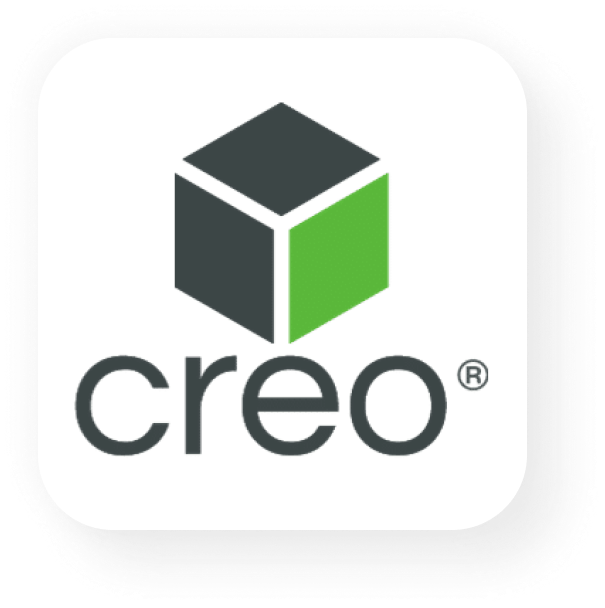
Price: Need to request a personal consultation; Free 30-day trial
Best for: Professionals and amateurs
Available on: Windows
Last version: 2023
Primary use: 3D CAD, CAM, CAE
Industry: Automotive, engineering, product design, Virtual Reality
2D and 3D parametric design system for complex products from PTC. PTC Creo CAD is widely used in a diverse range of design areas. Creo integrates many features such as thermal, structural motion, parametric and freeform surfacing, and direct modeling. This CAD application provides a free 30-day trial. Ideal for: 3D modeling and product design and engineering, automotive, and virtual reality. The data can be presented in the form of visualizations or 2D drawings.
With such good CAD software for engineering, you can create complex models with a huge amount of detail. PTC Creo makes it easy to create a 3D model from 2D drawings. Both are updated automatically, changes made in 3D appear in 2D and vice versa. The PTC Creo Flexible Modeling Extension (FMX), included with PTC Creo Parametric, – is a powerful set of direct modeling tools that allows you to quickly make changes to parametric and non-Creo models. This engineering design software includes core sheet metal design capabilities that save you time and control every step of the way. And all this can be done quickly, as the tool is easy to use.
What pros and cons did we find after using the program?
Pros:
- History-based modeling;
- Direct modeling tools;
- Working with complex surfaces;
- Easy to use;
- Scalability.
Cons:
- The user interface of the CAD design program is made in the old style;
- It confuses the database connection;
- The file size of the generated model is large.
Siemens NX
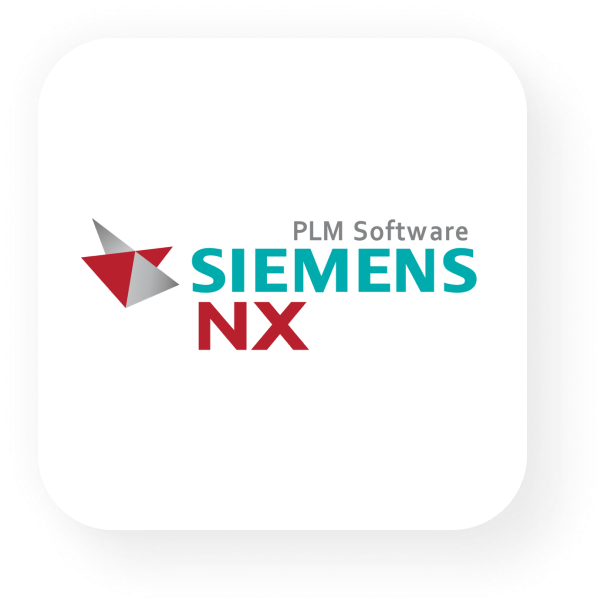
Price: Depends on the chosen solution for specific needs; Free 30-day trial; Free for students
Best for: Professionals and amateurs
Available on: Windows, macOS, Linux
Last version: 2023
Primary use: 3D CAD, CAM, CAE
Industry: Engineering, product design, medical
NX from Siemens is a flexible and powerful integrated solution that helps you bring new products to market faster and more efficiently. The CAD software program is used to develop complex products that include elements with complex shapes. NX is a well-known CAD/CAM/CAE system, which includes many modules for modeling, engineering calculations, design, programming, and production preparation.
NX supports all stages of product development, from concept and design to manufacturing. This set of tools allows you to harmonize work across disciplines, ensure data integrity, preserve design intent, and streamline your entire workflow.
What pros and cons did we find after using the program?
Pros:
- Complete simulation solution;
- Multiple operating systems support;
- Simultaneous work of numerous users within the same project;
- Advanced industrial design tools;
- Simple drafting software;
- Extensive modeling tools.
Cons:
- The user interface must be optimized according to the design requirements;
- If your Teamcenter is connected to a server, you cannot access it remotely.
Architectural and construction design
CAD software products tailored for architectural design, construction, documentation, and visualization.
ArchiCAD
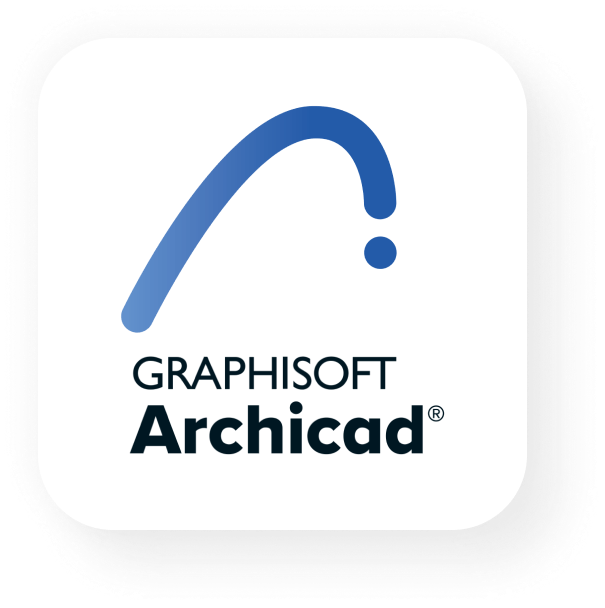
Price: From $200+ tax per month; Free 30-day trial license; Free for educational use
Best for: Professionals and amateurs
Available on: Windows, macOS
Last version: 2023
Primary use: Architectural design and documentation
Industry: Architecture, construction
Archicad occupies a special place in our best CAD software list because it is the most well-known application for architecture and construction. ArchiCAD is an industry-standard CAD software that provides the user with a powerful 3D modeling environment and implements modern technology for working with objects. This high-end CAD software is designed specifically for architects: the programming toolkit allows you to build drawings and models from familiar objects (walls, columns, ceilings, etc.), and the program has an intuitive interface. As computer-aided drafting software, ArchiCAD allows you to significantly reduce design time while improving the quality of project documentation.
ArchiCAD focuses on ease of use, ease of learning to work with the package, on the most complete and advanced libraries of materials and elements. Most often, CAD programs provide only one type of the above information, and only ArchiCAD allows you to integrate data in a single file that is understandable to both the professional builder and the buyer. Such drafting programs have everything you need to help you easily and without problems bring your ideas to life!
What pros and cons did we find after using the program?
Pros:
- A library with numerous architectural elements to build;
- Classic 2D drafting full-fledged toolkit;
- The ability to network, work on one project for several specialists;
- 3D visualization of the created project;
- Unlimited scaling of both individual objects and the project as a whole;
- Simultaneous access to all data;
- Constructing both flat drawings and creating a 3D model.
Cons:
- Limitations in the free version;
- Limited possibilities for creating objects with complex, non-standard geometry;
- The insufficient number of parametric GDL objects that are included in the program by default;
- Some extensions never update properly.
Rhinoceros (Rhino3d)
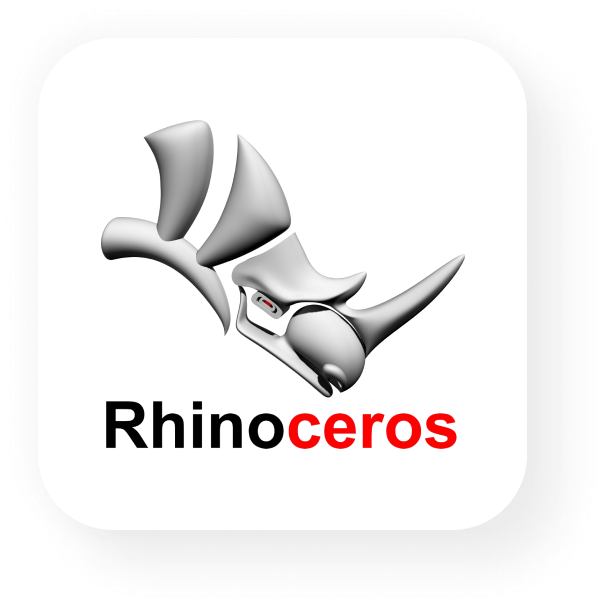
Price: From $95 per license; Free 90-day trial license
Best for: Professionals and amateurs
Available on: Windows, macOS
Last version: 2023
Primary use: 3D modeling
Industry: Automotive, architecture, jewelry, makerspace/3D printing, landscaping
It is a commercial 3D CAD modeling software. Rhino3d is a famous and popular solution for the development, analysis, documentation, rendering, and animation of 3D models in the fields of computer-aided design (CAD), computer-aided manufacturing (CAM), rapid prototyping, 3D printing, architecture, industrial design, and product design. This CAD modeling software offers a wide range of tools for modeling, rendering, editing, 3D capture, drafting, and analysis.
Rhino3d offers great flexibility in creating complex 3D models. It allows you to create, edit, analyze curves, surfaces, and solids, and fully work with NURBS objects. This CAD software for 3d modeling effectively works with objects of any complexity and size. You can create and edit any combination of curves, surfaces, and geometric bodies, and then export the created models to any format.
What pros and cons did we find after using the program?
Pros:
- You can add dimensions to a viewpoint;
- Import files from various sources including SketchUp, STL, AutoCAD, etc.;
- Displays 3D model control points;
- Workflow documentation;
- API refinement.
Cons:
- The application is not very good at drafting;
- The learning curve is time-consuming and very steep;
- Too many commands for simple rough work;
- Difficult to learn.
High-end and industry-specific CAD solutions
Looking for good CAD programs specialized for complex projects and industries like aerospace, automotive, and shipbuilding?
CATIA
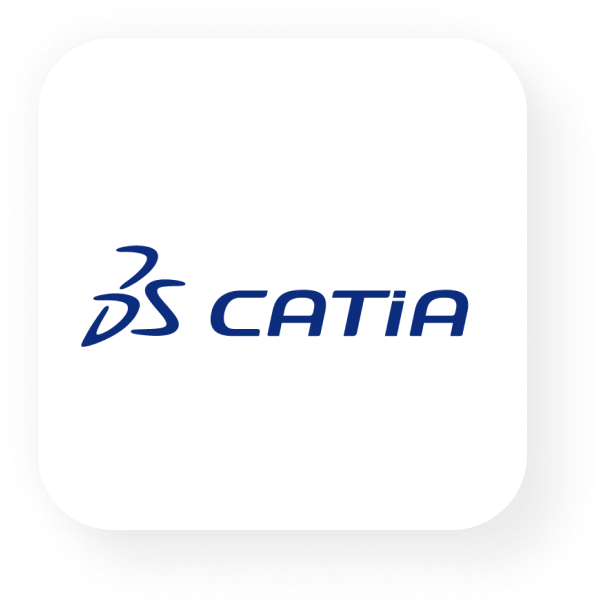
Price: Depends on the chosen solution for specific needs
Best for: Professionals and amateurs
Available on: Windows, Unix
Last version: 2023
Primary use: CAD/CAM/CAE
Industry: Automotive
CATIA is a computer-aided design solution from the French company Dassault Systèmes. CATIA is a great CAD program because its abbreviation even stands for Computer-Aided Three-Dimensional Interactive Application. CATIA can be used for CAD, CAE, and CAM, making it very useful for architects, designers, mechanical engineers, and other industry professionals. But most often, CATIA is used in the aviation industry. Once models are created, CATIA allows developers to assemble details and view model interactions in realistic simulations and high quality.
This 3D CAD system allows you to develop 3D models of complex products, associative drawings of parts and assembly units; supports work with large assemblies, associative links between a 3D model and its projections on drawings; includes surface modeling tools and digital layout (DMU) tools.
What pros and cons did we find after using the program?
Pros:
- Orientation to working with models of complex shapes;
- Deep integration with settlement and technological systems;
- Opportunities for the collaboration of thousands of users on a single project;
- Excellent design system for bent sheet metal parts;
- Facilitates preparation for the stage of rapid prototyping;
- Conversion to STL is supported;
- Well-implemented functions for working with surfaces.
Cons:
- It takes a long time to learn, and it’s hard to get used to, especially after AutoCAD;
- Quite a complex and unusual interface;
- The blueprint module is weak;
- Requires significant PC resources;
- The system is complex, not for beginners;
- Requires more modeling steps than other CAD software solutions.
Product design and prototyping
For those focused on product design and looking for tools to rapidly prototype ideas:
Shapr3D
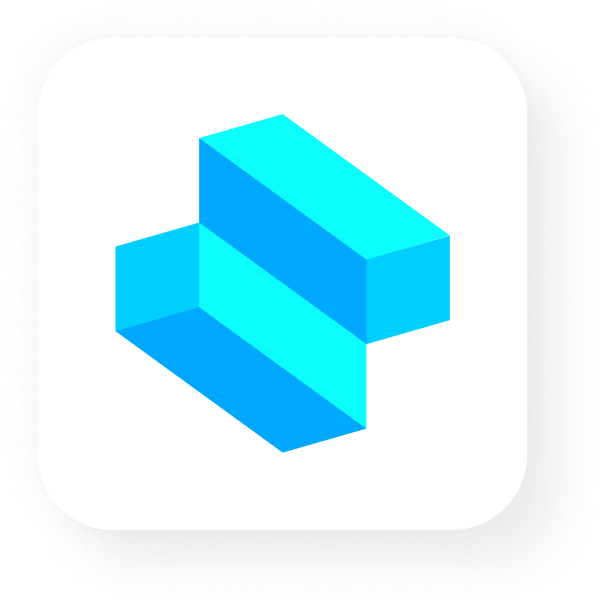
Price: $25 per month; Free for students, teachers, and faculty members; Free 14-day trial; Free Basic plan
Best for: Professionals and amateurs; Offer tutorials for beginners
Available on: Windows, macOS, iPad, and visionOS
Last version: 2023
Primary use: Сonceptual 3D modeling
Industry: Architecture, product design
The best CAD program on our list according to the reviews and user ratings we’ve collected. This is quite an intuitive solution. Users can prepare technical 2D drawings of models and immediately start creating prototypes. The program’s workspaces allow you to naturally sketch 2D shapes with mathematical precision. Intelligent grids automatically adjust to the active drawing plane, and fixed guides guarantee the proportionality of sketches. With Shapr3D, you can easily and quickly create 3D models for design, 3D printing, and much more. It is also a great tool for prototyping, creating visualizations, animations, and interactive presentations.
The main advantage of Shapr3D is that it is compatible with almost all most common CAD software. You can export your work to STL, STEP, or IGES files. In addition, Shapr3D allows you to showcase models virtually inserted into the environment using the built-in augmented reality tool. There is a free limited version of the Shapr3D CAD modeling program as well as free access for students and teachers. You can start with it and get acquainted with the latest version of the program on the official website and choose for yourself a product that will meet your requirements. For beginners, on the official website, there are video tutorials that will help to better master this CAD application software.
Pros:
- Instant creation of a 3D model and prototype;
- Export models for further manufacturing;
- Ability to work on any device with the synchronization function;
- Compatible with major CAD programs;
- Production, drawing, gluing, etc.;
- Intuitive design;
- Video tutorials;
- Visualization of sketches;
- Prototyping;
- Stand-alone functionality.
Cons:
- Limited free version.
How to choose the best CAD software: Useful tips from Applet3D experts
We are very happy if you found this article useful and have already found the software package that best suits your needs. However, we know that listing the key features may not be enough to help you make a choice, especially if you are a beginner. That’s why we decided to share some useful tips from our experts on how to choose the best CAD software.
- Determine your needs: The first step in choosing the best CAD program is to determine your specific needs. Consider the type of project you will be working on and the level of complexity required.
- Assess your user experience: Think about your familiarity with CAD solutions and your comfort level using different features and tools. Choose a program that aligns with your skills and experience level.
- Evaluate the features and capabilities: Consider the specific features and capabilities you need for your design work. Look for software that offers the tools and functions that are most important to you.
- Think about the cost: CAD programs can range from free to very expensive. Consider your budget and choose a software that offers the features you need at a price you are comfortable with.
- Check the learning curve: Decide if you’re willing to invest the time and effort required to learn a new CAD software. Some programs may have a steeper learning curve than others, so it’s important to choose one that you’re comfortable with.
- Look for free trials and demos: Many computer-aided design tools offer free trials and demos. Take advantage of these to test the software and evaluate its performance before making a final purchase.
- Evaluate compatibility: Consider the compatibility of the CAD program with your operating system and other software. Make sure the software is compatible with your computer’s hardware and software requirements.
- Look for good support and training: Make sure the software has a comprehensive user manual and other resources such as video tutorials, webinars, and online forums.
- Research and read reviews: Look for reviews and feedback from other users to get a sense of the software’s overall quality and performance.
Conclusion
Currently, there is a variety of modern computer-aided design programs on the market, which differ from each other both in functionality and cost. Choosing the right CAD system among all the varieties is not an easy task. When making a decision, you need to focus on several key factors that we have listed in this article.
Today we have introduced you to the top best CAD programs in 2024. This article is intended to help you find the software package that will best suit your needs and requirements. That’s why we’ve created a comparison table with the main features of each application, as well as shared our own experience with it, including the pros and cons we’ve found.


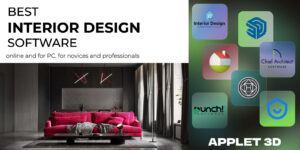






I’m looking forward to trying out some of the CAD software listed in this post!
Hi! If you try it, please share your experience and impressions.
I’m looking forward to trying out some of the CAD software listed in this post!
Hi! Have you tried any of them yet? Share your impressions.
I was looking through some of your articles on this website and I conceive this internet site is very informative! Keep putting up.
Hi, thanks a lot! Glad our website was informative and useful for you! What did you like the most?
You made a few fine points there. I did a search on the topic and found a good number of people will agree with your blog.
Thank you for your feedback. Glad if this topic was useful for you. What points are you talking about?